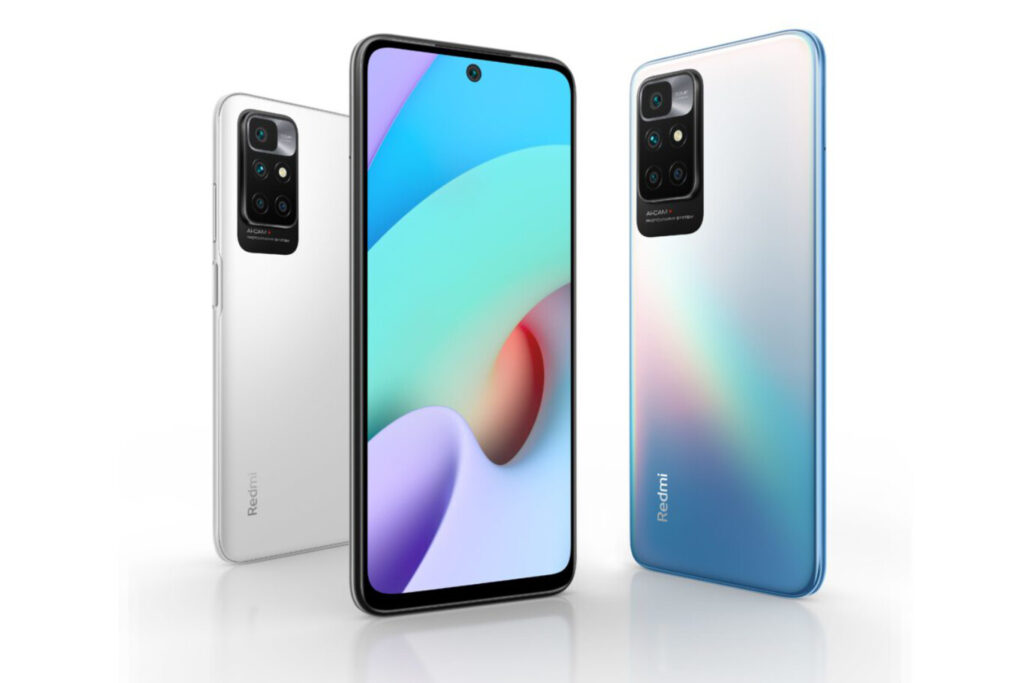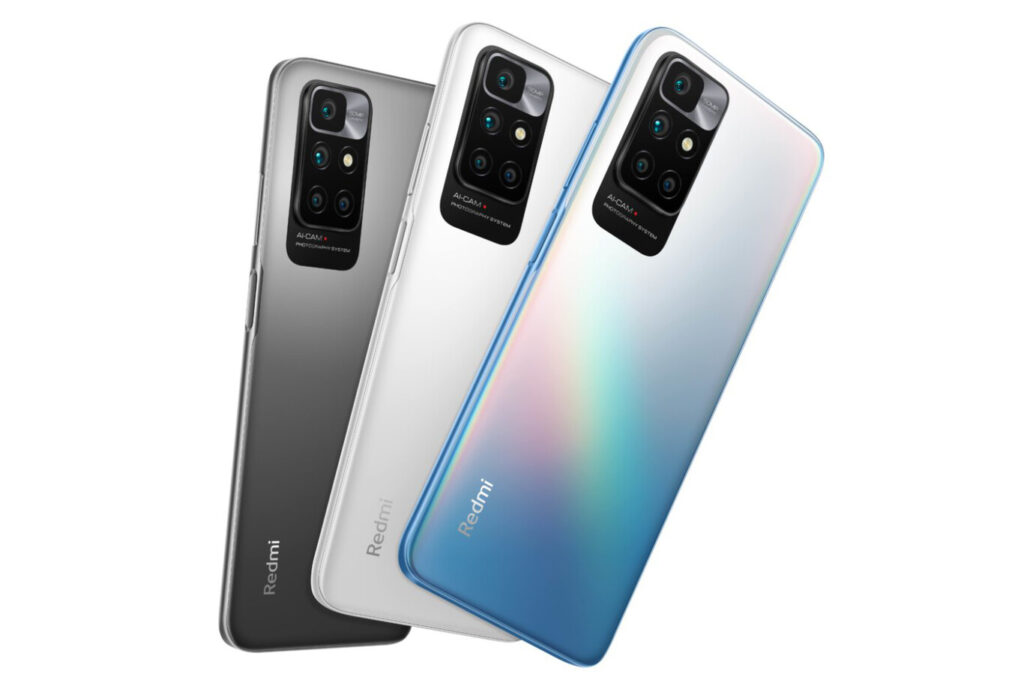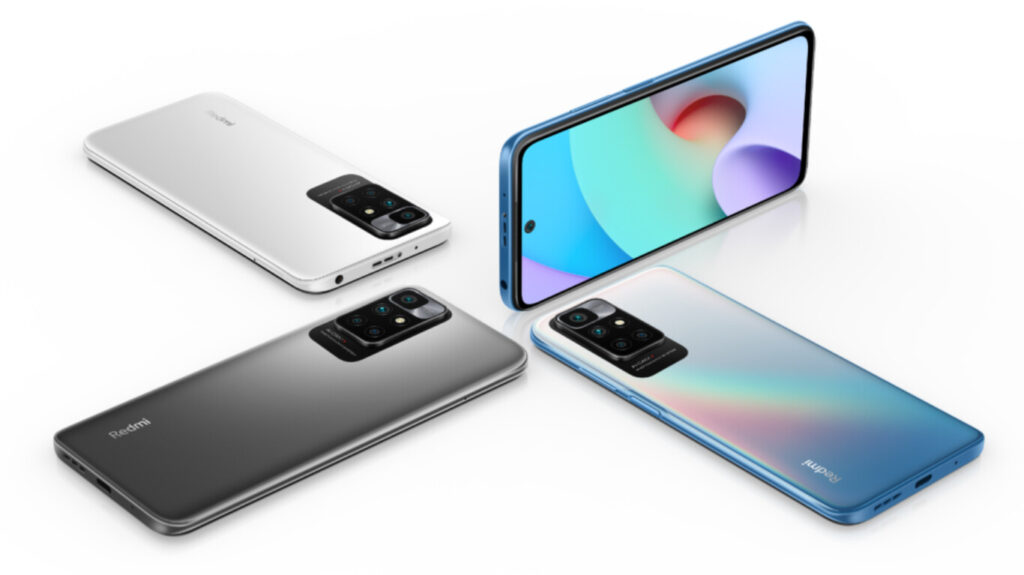Xiaomi has just made official the Xiaomi Redmi 10, its new mid-range device and affordable price. It is the successor to the Xiaomi Redmi 9, a device that was all about price and now upgrades to a 90 Hz screen, more memory and storage, and higher resolution cameras.
In the statement, the company has explained that the smartphone will be available for purchase from August 20 in different versions whose prices start at $179.
Xiaomi Redmi 10 Datasheet
| Xiaomi Redmi 10 | |
|---|---|
| Dimensions and Weight | 161.95 x 75.53 x 8.92 mm 181 grams |
| Screen | 6.5 inch IPS / LCD FUllHD + resolution (2,400 x 1,080 pixels) 405 dpi 90HZ refresh rate AdaptiveSync Gorilla Glass 3 |
| Processor | MediaTek Helio G88 ARM Mali-G52 GPU |
| RAM | 4/6 GB LPDDR4x |
| Internal Storage | 64/128 GB eMMC expandable with microSD |
| Rear Camera | 50 MP f/1.88 MP f/2.2 wide-angle, 120º FOV Macro 2MP f/2.4 Depth 2 MP f/2.4 |
| Front Camera | 8 MP f/2.0 |
| Battery | 5,000 mAh Fast charging 18W Reverse Charge 9W |
| Operating System | Android 11 with MIUI 12.5 |
| Connectivity | 4G DualSIM NFC Bluetooth 5.1 FM Radio GPS, Galileo, GLONASS |
| Others | Infrared sensor Dual speaker 3.5mm jack Side fingerprint reader Face unlock |
| Price | From $179 |
The screen goes up a notch

Let’s start by talking about the design and the screen. the Xiaomi Redmi 10 has a relatively simple rear. There are no big frills beyond the model with a holographic finish and the huge camera module that we find in the upper left corner. The device weighs 181 grams, has a thickness of 8.92 mm (on average), and, as interesting aspects, retains the infrared sensor and the headphone jack.
If you take a look at the screen, you will see a 6.5-inch panel (a little smaller than the previous generation) with FullHD+ resolution (2,400 x 1,080 pixels). So far nothing new, except for the refresh rate, which is now 90 Hz. This is not something new in the world of smartphones, but interesting in devices in this price range.
The screen does not move at 90 Hz all the time but has AdaptiveSync. The screen can adapt its refresh rate between 45, 60, and 90 Hz depending on the content. This is designed to save battery life by not having the screen running at full capacity all the time.
A mid-range engine

If we peek under the hood there is a MediaTek Helio G88 processor, one of the latest from MediaTek. It was launched last July and is manufactured in 12 nanometers. Its GPU is the Mali-G52 and it is accompanied by 4 or 6 GB of LPDDR4x RAM and 64 or 128 GB of eMMC internal storage. These are relatively basic components.
They are all given life by a huge 5,000 mAh battery with 18W fast charging (22.5W charger included in the box), which also has 9W reverse wired charging (to charge a headset with the mobile battery, for example). The operating system is MIUI 12.5 based on Android 11, so no surprises there.
Finally, and in terms of cameras, the Xiaomi Redmi 10 is the first Redmi to have a 50-megapixel camera. In terms of resolution, it is a substantial improvement over the previous generation, whose main sensor was 13 megapixels. Next to it is a wide-angle, a macro sensor, and a depth sensor. The front camera, hidden in the hole of the screen, remains at eight megapixels.
Pricing and Availability of the Xiaomi Redmi 10

The Xiaomi Redmi 10 will be available for purchase from August 20 in matte charcoal gray, pebble white, and glossy navy blue. It will be available in three versions:
- Xiaomi Redmi 10 4/64 GB: $179
- Xiaomi Redmi 10 4/128 GB: $199
- Xiaomi Redmi 10 6/128 GB: $ 219
This post may contain affiliate links, which means that I may receive a commission if you make a purchase using these links. As an Amazon Associate, I earn from qualifying purchases.

